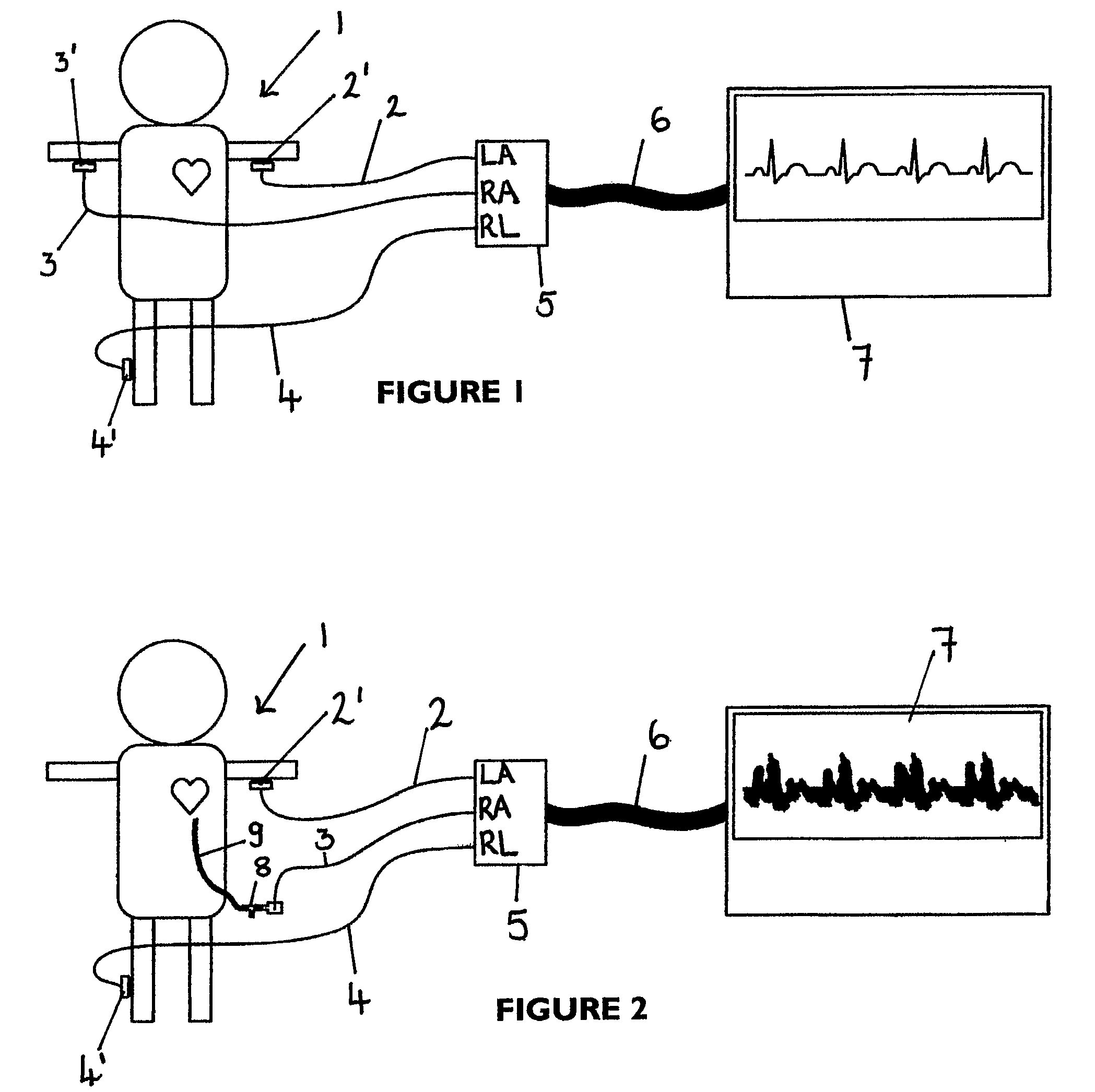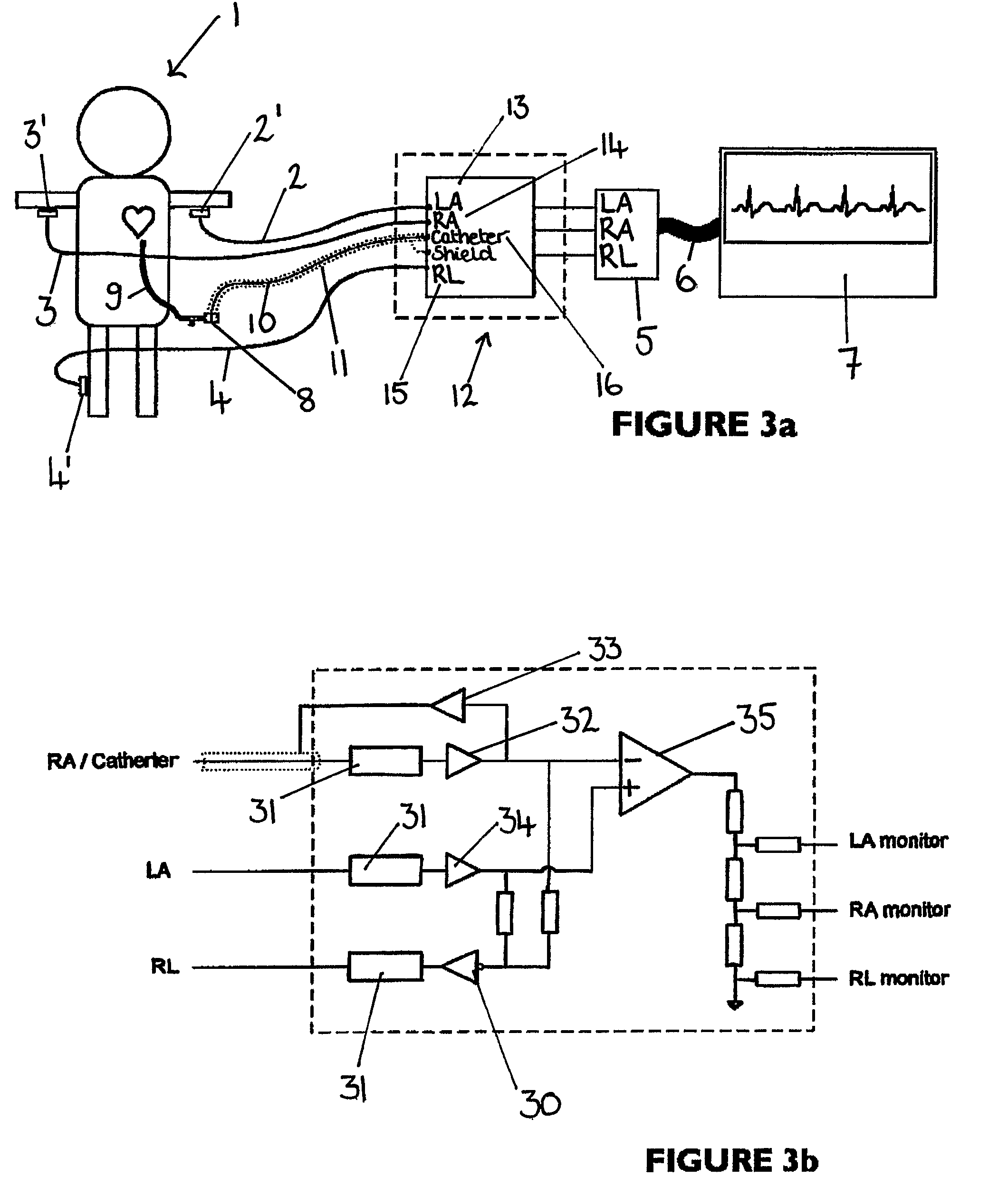Apparatus for detecting the position of a percutaneously-inserted intravenous catheter
a technology for apparatuses, which is applied in the field of apparatus for detecting the position of percutaneously inserted intravenous catheters, can solve the problems of clinical deterioration, inability to insert further, and inability to use a procedure which involves taking x-ray images of neonates
- Summary
- Abstract
- Description
- Claims
- Application Information
AI Technical Summary
Benefits of technology
Problems solved by technology
Method used
Image
Examples
Embodiment Construction
[0033]The ensuing description assumes that the ECG monitor is configured as ECG Lead I (left arm-right arm) (Einthoven system) using right leg as reference. Other lead configurations are equally possible, such as configurations in which the left leg is used as a reference.
[0034]Referring now to FIG. 1, there is shown a typical arrangement of an ECG on an individual 1 in which leads 2, 3 and 4 are connected to the left arm, right arm and right leg respectively by electrodes 2′, 3′ and 4′. The leads 2 to 4 are connected respectively to the left arm (LA), right arm (RA) and right leg (RL) terminals on a patient lead connector 5, which is itself connected to by a cable 6 to an ECG monitor 7. Interference is not a significant problem with this arrangement as each of the leads 2 to 4 presents substantially the same, relatively low impedance.
[0035]Referring now to FIG. 2, where the individual 1 is a neonate, instead of the lead 3 which connects to the RA terminal of the patient lead connec...
PUM
 Login to View More
Login to View More Abstract
Description
Claims
Application Information
 Login to View More
Login to View More - R&D
- Intellectual Property
- Life Sciences
- Materials
- Tech Scout
- Unparalleled Data Quality
- Higher Quality Content
- 60% Fewer Hallucinations
Browse by: Latest US Patents, China's latest patents, Technical Efficacy Thesaurus, Application Domain, Technology Topic, Popular Technical Reports.
© 2025 PatSnap. All rights reserved.Legal|Privacy policy|Modern Slavery Act Transparency Statement|Sitemap|About US| Contact US: help@patsnap.com



